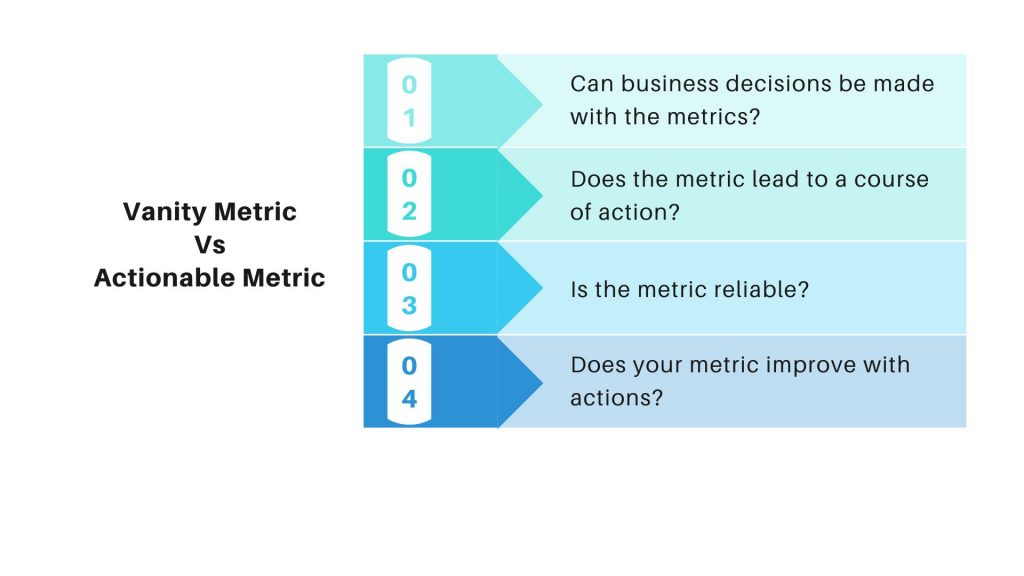
As discussed in the article “Vanity Metrics Vs Actionable Metrics”, it might often be too dangerous to go after the vanity metrics alone. However, as your business grows, the metrics that were initially measured as your key/Northstar metrics might become less relevant at this stage. That means actionable metrics at one stage of your business can become a vanity metric as you grow. Hence it is important to audit your metrics and have them always associated with your business goals.
For example, consider a SaaS business that has just started on free beta. To increase brand awareness, one goal might be to market and onboard as many users as possible for free trial. This goal might be set to get the maximum number of users to experience the platform and establish a presence in the industry. But once the product goes live the goal changes; the focus is now on growth. Hence, this metric might become a vanity metric. To convert that into an actionable metric you will need to change the ‘Number of free-trial users’ to ‘Free-trial to paid conversion rate’ metric.
So, a metric becoming vanity or actionable changes from organization to organization and also depends on the growth stage. Hence, auditing your metrics to identify vanity metrics and make them actionable is very important.
Choosing or Auditing your Metrics
STEP 1: First, set your business goals
STEP 2: Run each metric through the following questions
- What am I measuring with this metric?
- How does it fit into my business goal?
- Is this an Actionable or Vanity Metric?
- Run the metric through the below questions to identify if it is an actionable metric. If the questions turn out negative; then it is a vanity metric and needs to be converted to an actionable metric.

Example:
Let’s take the same free trial user example above to explain how you audit and convert a vanity to an actionable metric.
The metric ‘Number of free-trial user’ gives the count of all the users on free-trial. Though it’s good to know the number of users who are trying out your application, it does not add much value if your business objective or goal is to grow your business. You cannot form a strategy or define a course of action by just knowing this number. Instead, if you convert this metric to ‘Number of free-trial to paid conversion rate’, then it will give you the actual number of users who found value in your application.
Another example is the web traffic on your website. Everyone wants to see the visitors to the website grow day by day. However, this metric might not always speak the truth and might be misleading. By spending a few dollars or with a viral post the web traffic or social media followers can be increased. However, that does not give any meaningful info. It needs to be converted to a more meaningful actionable metric like, ‘Source/medium of site visitors’. This not just gives the number of visitors but also gives a clear insight into the marketing areas that need to be focussed.
Hence, converting vanity metrics to actionable metrics can be achieved by keeping in mind the business goal and the actionability of the metric.
Vanity Metrics to Actionable Metrics
For each Vanity metric you track, there is an even smarter Actionable metric that will give deeper insights. So converting vanity metrics to actionable metrics will help you make the right business decisions. See below a list of few commonly followed vanity metrics and their smarter actionable counterpart.
| VANITY METRIC | ACTIONABLE METRIC |
| App Downloads | Registered Paying Users |
| Free-Trials | Free-trial to paid conversion rate |
| Website Visitors | Marketing conversion rate |
| Monthly Active Users | Average user logins/sessions per week |
| Social Media Followers | Social Media Referral and Engagements |
| Website Visitors | Source/medium of site visitors |
| Email Opens | Email Clicks |


